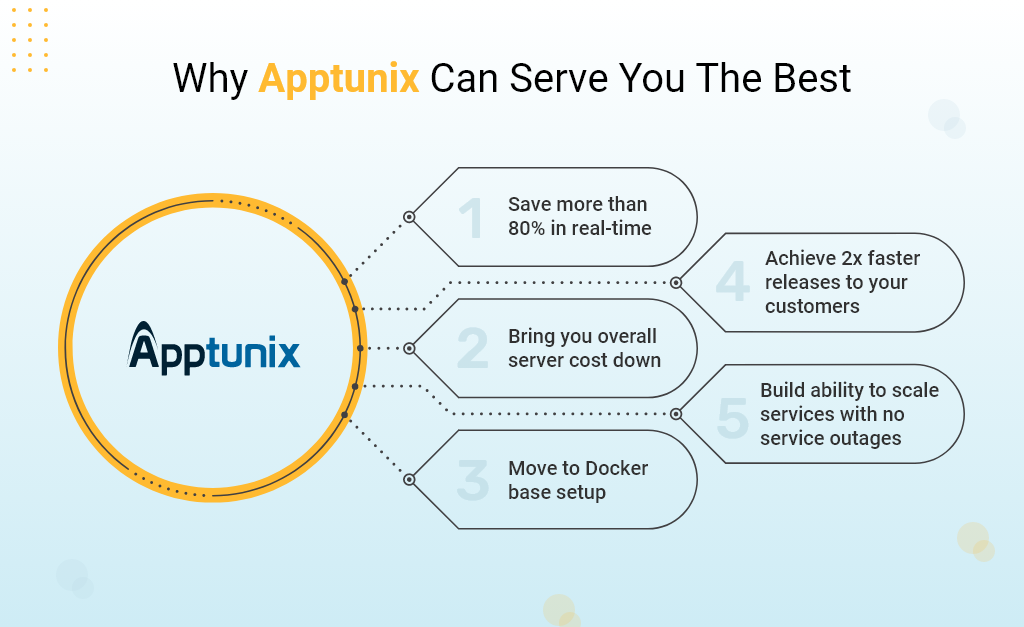Don't miss the chance to work with top 1% of developers.
Sign Up Now and Get FREE CTO-level Consultation.
Confused about your business model?
Request a FREE Business Plan.
The DevOps Approach To Software Development: Essentials And Best Practices For 2022
Table of contents

We are living in a modernized world!
You think of an app idea, delay its launch by two months, and you will find someone else already making their entrance in the market, offering a much similar solution that you are planning to launch.
It conveys the need to be agile in the software development world, where time management is the biggest problem that businesses are facing these days. However, one of the approaches that are helping this industry with faster and smoother development of digital products is DevOps.
It is an emerging technology that helps in crossing the communication barrier between different departments of an organization. In this blog, you will get to know all about DevOps, its business benefits, and best practices.
So, let’s get started.
What Is DevOps?
DevOps is a collection of methods, technologies, and a mindset that automates and integrates software development and IT teams’ processes. It also draws attention to cross-team collaboration and communication, team empowerment and technology automation.
A DevOps team consists of developers and IT operations personnel. They collaborate throughout the product lifecycle to improve software deployment speed and quality. It’s a new way of working as it brings a cultural transformation with far-reaching repercussions in the business.
Development and operations teams are no longer “silos” in a DevOps architecture. These two teams may occasionally come together as a single team with engineers who work across the whole application lifecycle. That is from development and testing to deployment and operations.
DevOps teams employ tools to automate and speed up procedures, which improves reliability. A DevOps toolchain helps teams in tackling key DevOps principles such as continuous delivery & integration, automation, and collaboration.

The DevOps lifecycle is divided into six phases, each of which represents the procedures, capabilities, and tools required for development and operations. The development tools are shown on the left side of the loop and the operations are shown on the right side of the loop. Teams collaborate and communicate throughout each phase to keep velocity, alignment and quality.
1. Plan
Agile project management and software development is an iterative process. And this process allows teams to break down work into smaller chunks and produce incremental value. It should be adopted by DevOps teams to increase speed and quality.
2. Build
Git is a version management system that is both free and open source. It features numerous unique and strong processes and tools. And also for the development build process due to its great support for branching, merging, and rewriting repository history.
3. Continuous Integration & Delivery
With automated procedures, CI/CD enables teams to release high-quality products regularly and predictably, from source code repository to production. Teams may often merge code changes, deploy feature flags, and do end-to-end testing.
4. Monitor & Alert
Identify and resolve issues that affect product uptime, speed, and functionality as quickly as possible. Notify your team of changes, high-risk actions, or failures automatically so you can keep systems running.
5. Operate
Manage the delivery of IT services to customers from beginning to end. This refers to the procedures for designing, implementing, configuring, deploying, and maintaining all IT infrastructure that underpins an organization’s services./span>
6. Continuous Feedback
Each release should be evaluated by DevOps teams, who should then provide reports to enhance future releases. Teams may enhance their processes and incorporate customer feedback into the next release by collecting continuous feedback./span>
7 DevOps Best Practices To Follow For Better Operations
The main aim of the DevOps approach is to break down the traditional norms between the development team and operations team to establish effective communication. As a result, DevOps offers numerous commercial and technological benefits, such as shorter development cycles, faster deployment, shorter time to market, and so on.
Adopting DevOps, on the other hand, is no easy task as it requires a cultural shift in your organization. However, DevOps consists of 7 best practices that you must follow for efficient operations. This section will cover 7 DevOps best practices that will make your DevOps journey easier and provide you with additional benefits.

Let’s discuss each of them in detail.
1. Follow Agile Methodology
Today, so many companies are implementing Agile and it is also an essential requirement for introducing DevOps. Agile can be defined as a software development approach used to help teams deliver their product with fewer bugs. Using this methodology, teams break their project into small bits and focus on delivering the best results.

Also Read: 3 Success Stories To Prove How Agile Software Development Can Help
If you combine your DevOps approach with the Agile methodology, it will take your development process one notch up and offer quick deployment. DevOps also encourages the Agile approach by allowing continuous communication and collaboration between development and IT operations teams.
2. Build a Collaborative Environment
The main aim of DevOps is the elimination of existing silos between the operation teams to improve collaboration. Implementing the DevOps approach will bring a positive organizational culture shift, beginning with cross-team communication and collaboration.
The best practice you can implement is modifying existing team structures, behaviors, and workflows. This type of transformation can help in removing the barriers to effective collaboration. Furthermore, encouraging enhanced team communication will contribute to building trust and transparency among the teams.
3. Invest in Test Automation
Automated testing is one of the most essential practices that involves continuous testing. We use automation to reduce repetitive manual testing and eventually this will help in speeding up the testing process. It aims to catch defects early in the pipeline when they are easier and less expensive to correct. As a result, continuous testing aids in the delivery of high-quality software at a cheaper cost.

These automated tests are often executed throughout the continuous integration build, as well as on a requirement basis. The automated tests should be determined on a case-by-case basis, depending on the maturity and demands of each software. These tests consist of unit testing, component testing, integration testing, end to end testing, performance testing, etc.
4. Implement Continuous Integration & Delivery
DevOps culture is built on automation. Implementing a CI/CD pipeline also makes the entire coding, building, testing, and launching process more automated. It aids in the acceleration of the development cycle, the frequent push of code into production, and the generation of reliable and secure software.

With continuous integration, developers can merge code into a central repository and use automation tools to validate the merged code. Whereas, in continuous delivery, tools automate the deliverables of the source repository and ensure that they are frequent, frictionless, and predictable. Even the most sophisticated applications can be delivered with CI/CD.
Implementing CI/CD requires huge investment and effort but if the best practices are implemented it can have a positive impact:
- Keep a single code repository
- Automate the process and enable continuous deployment
- Implement version control
- Keep the whole process secure (from development to deployment)
- Fix the broken builds first
- Start testing early and often while developing the code as it offers faster test runs.
- Gather feedback continuously
5. Develop a Security-First Approach
Security should be the top priority of organizations where security vulnerabilities and breaches can result in financial losses. Any CI/CD system can be the primary target for these attacks as they include the code and credentials for deployment in several environments.

As a result, prioritizing quick releases and implementing security later is neither practical nor efficient. Instead, it should be built into DevOps pipelines from the beginning to the end, a process known as DevSecOps.
Security automation is another best practice of the DevOps approach that is simple to add to the CI/CD workflow. It helps in the execution of security validations for every piece of code you release, ensuring that it is not vulnerable or has security flaws. CI/CD systems can also be isolated and placed on secure internal networks. VPNs, strong two-factor authentication, and identity/access management can also assist reduce threat exposure.
6. Microservices Architecture is the Key
Microservices architecture aims to divide large applications into independent projects. Individual components, each with a defined purpose, work independently of one another and the overall application. They’re set up as stand-alone services that communicate through APIs.
This architecture enables all the teams to take ownership of their services and it also minimizes the cost of coordination for updating applications. Organizations use this architecture to increase flexibility and speed up innovation. In contrast to monolithic architecture, it also eliminates SPOFs (single points of failure) by guaranteeing that one service does not affect other sections of the program.
The microservices architecture can also be integrated with the DevOps framework as teams can gather specific functionalities in microservices and then use them as building blocks to create larger applications. The teams can also add new features to the app without affecting the rest of it. Furthermore, DevOps best practices like CI/CD are used to drive the deployment of microservices to prevent operational difficulties and assure a quick and consistent deployment.
7. Version Control & Tracking
Version control is one of the best DevOps practices used to manage code in versions so that revisions and modification history can be tracked and the code can be easily reviewed and recovered. It also makes the process smooth for merging code within the same files, handling conflicts, and rolling back changes to the earlier state.
Version control is an important part of DevOps. It facilitates collaboration among development teams by dividing coding jobs among team members and saving all code in a shared repository for simple recovery when needed. It is also a key component of DevOps best practices like continuous integration and infrastructure as code (IaC).

When DevOps Approach Would Be Most Appropriate?
The fundamental goal of any organization is to take its idea from conception to profit. The DevOps approach aims to provide convenience to the businesses to explore innovative ideas and work efficiently by eliminating the development and maintenance issues.
When would the DevOps approach be most appropriate? Applying DevOps principles to any project can be a good move at any time. When it comes to complex projects, the effective implementation of this methodology is often critical to the overall success as well as profitability.
The more components you integrate, the more advantages DevOps provides. For example, large enterprises have to deal with multiple modules for them to work as a single unit. Companies that need to deliver new versions of their product regularly should use the DevOps approach. This is because this method contributes to continuous software development and delivery. Furthermore, entrepreneurs will benefit from this practice because it can cut expenses and speed up the process of generating a high-quality product.
DevOps is the most appropriate method when you want to lower the cost of infrastructure management and grow your company at the same time.
Hire DevOps Engineers: What To Look For And Why Apptunix Can Serve You The Best?
Apptunix has an excellent software development team with considerable expertise in offering outstanding DevOps solutions for all business industries. We help startups and SMEs in optimizing their workflow, gaining competitive advantages and solving industry challenges.

You can enjoy the following benefits if you hire a DevOps engineer from Apptunix:
- A whole team of result-driven DevOps engineers with extensive expertise.
- On-demand services include custom software development and updates, as well as the modernization of legacy systems.
- A cutting-edge technology stack for delivering cutting-edge software
Wrapping Up
As you must know by now from this blog, DevOps engineers are subjected to being pretty high-level and this is the reason why DevOps can be so difficult to employ. On the other hand, hiring a trained DevOps team will only help your project advance. Especially if you’re working on anything large-scale that will need to be updated regularly.
If you are still confused about hiring the best DevOps engineers, let us help you. We have several in-house DevOps engineers ready to help you with your project. They have extensive knowledge, over 5 years of experience, and the ability to improve any sort of project. Contact us right now to talk about the specifics of your project and to recruit DevOps to kickstart a high-performing team.

Rate this article!
(1 ratings, average: 5.00 out of 5)
Join 60,000+ Subscribers
Get the weekly updates on the newest brand stories, business models and technology right in your inbox.

Lively and spirited. You may call me a tech-geek. I like to explore latest advancements in the technical areas and develop case studies. Being a computer science graduate, I like to traverse through the technical platforms as well. You can find me understanding or playing with the latest technology.

App Monetization Strategies: How to Make Money From an App?
Your app can draw revenue in many ways. All you need to figure out is suitable strategies that best fit your content, your audience, and your needs. This eGuide will put light on the same.
Download Now!Don't Know Much
About Technology?
Let our experts help you decide the right tech stack for your idea.

















